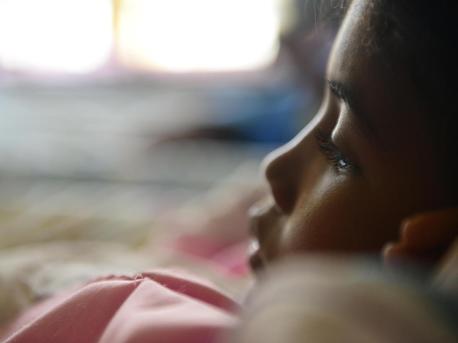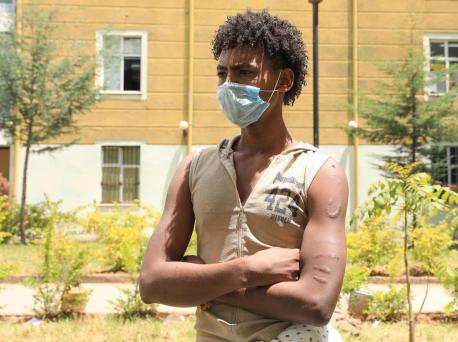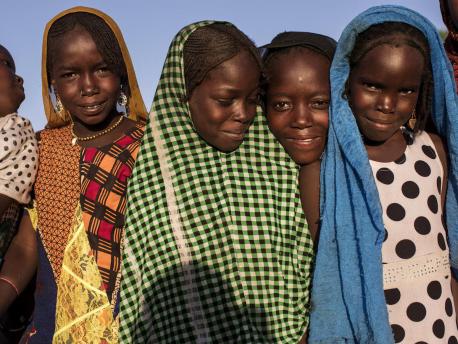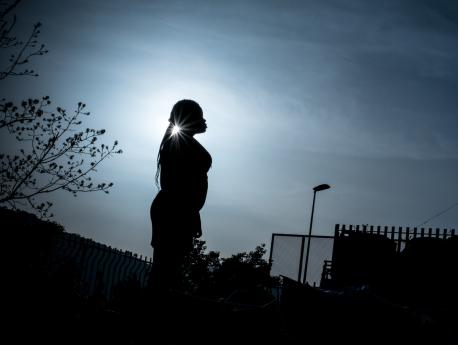
It's Time to End Violence Against Children
Want to stop trafficking and other forms of violence against children? Show your support for the Congressional Resolution to End Violence Against Children Globally.
UPDATE January 6, 2021: UNICEF USA applauds the U.S. House of Representatives' decision to pass H.Res.230, a bipartisan resolution to end violence against children globally in the 116th Congress. We recognize the leadership of Rep. Jim McGovern (D-MA) and Rep. Joe Wilson (R-SC) for sponsoring this measure and working to bring this bill to a vote. We look forward to building on these efforts in the 117th Congress.
All children deserve to grow up free from the harmful effects of violence
Every day, children experience violence — often at the hands of people they know at home, in school or in their communities. An estimated 1 billion children experienced physical, sexual or psychological violence in the past year alone. Nearly 1 in 5 girls is sexually abused during her lifetime, and more than 175,000 children go online for the first time every day, exposing them to potential sexual abuse and exploitation.
It's important to recognize that child trafficking is a form of violence that can lead to serious lifelong consequences. Child trafficking is the recruitment, transportation, transfer, harboring or receipt of children for the purpose of exploitation induced by force, fraud or coercion. Victims of child trafficking are likely to suffer from depression and anxiety and to engage in risky behaviors. For some, it can lead to suicide.
Child trafficking is a form of violence against children
Although the most commonly known form of child trafficking is sexual exploitation, human trafficking also takes the form of forced labor and forced marriage — often referred to as modern slavery. According to the International Labor Organization, one in four victims of modern slavery are children.
In the United States, accusations against Jeffrey Epstein and R. Kelly and the cases of sex trafficking victims Cyntoia Brown and Chrystul Kizer have sparked discussions on domestic child trafficking for sexual purposes. Studies have shown that black girls are more likely to experience physical and sexual abuse at a younger age and witness and experience multiple forms of violence at higher rates than their peers.
As a former volunteer at Covenant House, the largest provider of supportive services to youth experiencing homelessness in New York City, I remember hearing countless stories of teenage women detailing the violence and trauma they had experienced. I also learned that they were targets for human traffickers, who preyed on their vulnerability. Trafficking is an epidemic that requires all of us to come together and have challenging conversations to find a solution to protect our children.
Trafficking is a global epidemic
In March 2019, the Congressional Resolution to End Violence Against Children Globally (H.Res.230 / S.Res.112) was reintroduced to condemn all forms of violence against children, including exploitation, and to recognize the harmful impact that violence has on the healthy development of children and youth, as well as the economic impact. The Resolution calls on Congress to utilize the INSPIRE Framework to develop and implement a coordinated strategy and measure progress through common metrics and indicators. The framework is a set of seven strategies developed by UNICEF, the World Health Organization (WHO) and U.S. government agencies to end violence against children.
Using the INSPIRE framework, the passage of this resolution would result in the implementation and enforcement of laws that would help end child trafficking and provide support services, education and life skills training to survivors. Fortunately, we've made some progress with this critical piece of legislation. In October 2019, the House Foreign Affairs Committee unanimously passed H.Res.230, moving it one step closer to a full House vote.
Top photo: UNICEF works around the world to protect children from all forms of violence and exploitation. © UNICEF/UN0314550/Pudlowski
HOW TO HELP
There are many ways to make a difference
War, famine, poverty, natural disasters — threats to the world's children keep coming. But UNICEF won't stop working to keep children healthy and safe.
UNICEF works in over 190 countries and territories — more places than any other children's organization. UNICEF has the world's largest humanitarian warehouse and, when disaster strikes, can get supplies almost anywhere within 72 hours. Constantly innovating, always advocating for a better world for children, UNICEF works to ensure that every child can grow up healthy, educated, protected and respected.
Would you like to help give all children the opportunity to reach their full potential? There are many ways to get involved.





